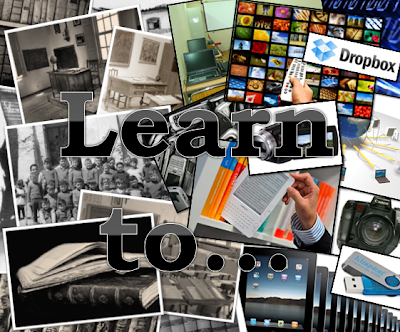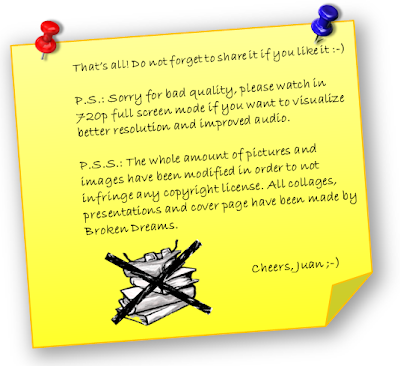The 5th of March SOyER group had an unusual guest in its
classroom. He was the great teacher Manel Rives who came to the University of
Murcia, concretely the Faculty of Education, in order to make a workshop with
us. But, before explaining Manel’s method and all tasks we had the opportunity
to carry out we should introduce who Manel Rives is.
Having a look at Manel’s twitter we have a short description about
Manel’s job.
He is a teacher who incorporates new technologies to educative
area. First of all, we use to think if new technologies improve children’s
knowledge; in reference to this point, according to Manel’s words:
“It is only another way to make things, I
have found new technologies a better method to lead my pupils’ work but other
teachers will think I am a bit crazy making projects with technology and not
with books, it only depends on the manner you want to impart your lecture.”
And it is true, Manel’s children are not guided by a text book, this
kind of classes conceive text books as an alternative choice which it is only
used to look for information and comparing different sources. Manel’s
methodology is based in Learning by projects and it is in these tasks where
technology is incorporated. When we think about this type of teaching we use to
consider projects as boring assignments which are not completely read by
ourselves and they are just made for the sake
of submitting one. However, with Manel things seem to be quite different;
children are motivated every time and they pay a lot of attention to their work
putting all effort which is possible. In regard to this point, why are Manel’s
children so encouraged? And, on the contrary, why are children with common
learning methodologies less stimulated? We could say one of the main factors is
technology. Technology is the most powerful instrument of the world but, at the
same time, it is one of the easiest elements to control (basic control, not
professional or expert on controlling) and, in fact, give a computer game to a
child, wait for some days and then let me know if he or she has just finished
the whole game without necessity to read instructions, I am pretty sure he or
she will have completed all the game. Consequently, if we extrapolate this
revolutionary behavior to the rest of technological device we could have an
idea about how children manage technology and they have a sixth sense to run
these new tools.
In this way, what are those Manel’s projects which combine knowledge and
new technologies? As Manel said, there is not an only program for making all
this kind of tasks but these entire programs software share an only device to
make them possible: IPad. I think IPad does not need any presentation when tons
of people have ever used one or even they used it daily to work with.
Next we are going to introduce three main tools which Manel uses with
children and the example of each one we made in class (please think that day we
were two in Broken Dreams group so I joined to Hakunamatateros group, thanks
also to them for the good company, as a result of this, Toontastic and Comic
examples are the same because they were made by them and me).
Toontastic
Toontastic inspires the artist and writer
in every child while teaching key storytelling principles that help to promote
Creativity at a young age. Toontastic’s drawing tools bring kids’ wildest ideas
to life alongside virtual play sets chock full of pirates, princesses, far away
galaxies, and many other characters and settings to spark the imagination.
Cartoons can be shared online via ToonTube, Toontastic’s Global Storytelling
Network, to help children connect to friends and family and learn about other
cultures, customs, and lifestyles through stories created by their peers around
the world. (from
Toontastic webpage)
Here is
our example about Toontastic. The plot is just ridiculous but we were tired of
racking our brains and we admitted that was not a pedagogical story to tell to
children. Please click in the next link to watch the story.
Strip
Designer
Be creative on the go. With Strip Designer you can create your own personal
comic strip right on your iPhone or iPad. Add photos from you photo album or draw
your own sketches. Apply simple image filters to increase the impact of photos,
and add speech balloons and text-boxes. (description from Strip Designer’s
manufacturer)
But, what advantages can
produce a comic compared to reading a text book? We have thought about this
important question and we have summarized some reasons which evidence comics’
benefit. Here are some examples:
-
Comic is easy to manipulate.
-
It is not so expensive.
-
Comic gets grabbing children’s
attention.
-
It is out of traditional tasks.
-
It develops the creativity.
-
Comic makes learning as
significant.
-
It creates reading habits.
-
It makes easier communicative
actions and reading comprehension.
-
It fosters children’s logical
thinking.
-
Comic can be adapted to every
level and subject.
-
It may help to perform better
at reading and writing difficulties.
-
Comics can be used as an
introduction to books.
In addition, I should point
out Strip Designer was very easy to use and I am pretty sure all children can
quickly adapt to these new tools due to the exposed advantages and also because
of attraction which Technology grabs generally in children. On the other hand,
if I had to make reference to some disadvantage I think it would be to use the
IPad’s touch screen since sometimes it is difficult to type fast and it may
have some difficulties when you try to fit bubbles in little places.
Here is the comic example
which I made with Hakuna Matateros group. The story line is quite simple but
sometimes it has to be straightforward because making complex plots may take a
lot of time and that morning we only had an hour for creating a comic and a
Toontastic story.
Stop Motion
What is Stop Motion?
Stop motion is an animation technique to make a physically manipulated object
appear to move on its own. The object is moved in small increments between
individually photographed frames, creating the illusion of movement when the
series of frames is played as a continuous sequence.
Stop
motion’s didactic possibilities are very wide but we could emphasize this
technic allows to children to develop their creativity as well as incrementing
teamwork and promoting plastic and audiovisuals features.
Broken
Dreams’ Stop motion about dinosaurs has already posted in Pensamiento Ajeno
Blog so if you have not seen our creation please go below and enjoy it ;-)
Reflection about Manel’s visit
and methodology
First of all, sorry but I have
to say it: Manel rocks!! Manel is such a great teacher and if I were one of
their students I would be very happy because there is not a huge amount of
teachers like him.
Once I have said this I will
be more serious and I will explain my thoughts about his workshop. I think
Manel is out of the typical world where teachers are nobody without books and
he wants to go beyond discovering new limits about teaching and learning and,
from my point of view, this is something I really like because it proves how
teacher job is not a static activity as many people consider it is.
Learning by projects is a good
option to educate children and also, if we link this one to new technologies we
could obtain a powerful relationship thanks to which Manel may have found the
key to enter in a new teaching concept which, moreover, is partly based in TPCK
foundations since besides of using Technology it mixes Content and Pedagogy.
This way to impart lectures
gets other elements which normal lectures cannot get with the same quality,
that is, we are dealing with elements as motivation, initiative, interest,
enthusiasm, inspiration, creativity, stimulus…lot of feelings which may produce
significant learning since, memorizing a paragraph can be done with or without
a good teacher but, making that paragraph as a part of our knowledge is more
difficult and in this point good teachers, methodology and good environment
take an important role.
On the other hand, in
reference to workshop which Manel made I have to admit I did not have any idea
about what presentation was going to be about…yes, I knew dinosaurs were going
to be one of the morning main characters and, the day before, Linda also told
us he used to work with Stop motion and other tools so I have to say I knew
something about him, but not too much and due to this reason the whole four hours
passed very fast.
Unfortunately there was not a
lot of time and therefore, we had to make activities quickly and if it is the
first time you use an IPad I beat the task may be so long because we are not
used to type on big touch screens and in addition, we are not also familiarized
with those software programs so, first of all it was discovering how to start
controlling the tool. However, we got interested in using IPad and its programs
and we could prove how tasks which are made by pencil and paper may result very
boring and, on the contrary, utilizing technological devices make more
interesting jobs and, in fact, if we sat open-mouthed the whole class, how could children not be motivated
to make activities all the time?
We could be talking about
Manel for long hours but if we wanted summarize that morning in one sentence I think
it could be something like:
“Making knowledge as significant through innovation”
As US people often say in other
contexts, Manel, you are THE MAN of resourceful teaching concept and new technologies;
I like your way to impart lectures but I am not sure of saying: I want to be
with you in the future, I am in the first grade of my degree, I want to know other
teachers and methodology before consider what it is the best for me but, right
now, I beat you are one of my choices for being as you in the far future.
Finally, here is my photo with
Manel and Hakuna Matateros group, what a great time we had that day!
That is all; see you in the
next post.
Cheers,
Juan ;-)














.png)
